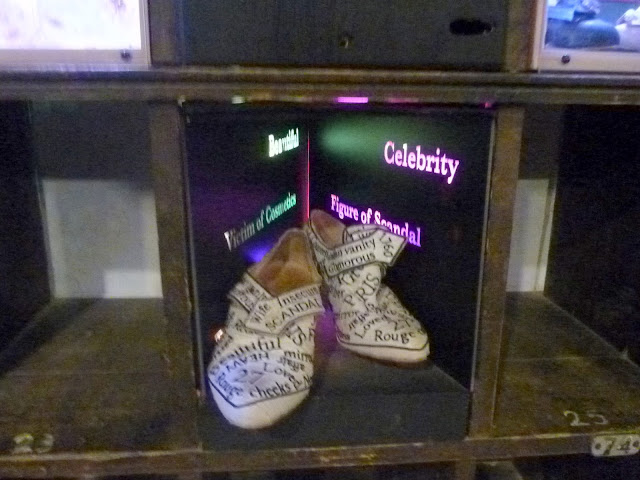Another dull, grey day. Despite that, it was very enjoyable, particularly since the grounds are extensive and we managed to have a nice, long walk. The entrance to the National Trust property leads to a narrow path and then you find yourself at the top of the hill looking down at the extensive grounds and the house on the left.
The grounds were designed by Lancelot Capability Brown in the mid 1750s. It was the first complete landscape designed by Brown who pioneered the shift from formal gardens to more natural looking landscapes. Before Brown worked here the land at Croome was a boggy marsh called 'Seggy Mere'. With his engineering and drainage skills Brown created a long lake which is a mile and 3/4 long and looks like a river winding through the parkland.
Over 5000 different species of plants were brought to Croome from all over the world, including some discovered on Captain Cook's South Pacific voyages. By 1801 Croome's botanical collection was considered second only to Kew.

The church of St Mary Magdalene is on top of the hill
and we decided to go inside and have a look.
Nearby is the Ice House.

The walls of the ice house are double-skinned to maintain a consistent cool temperature below ground. Chunks of ice were carted from the nearby pond in the orchard, unloaded on the paved area at the entrance and packed into the chamber of the ice house.
The chunks of ice were layered with straw for extra insulation The ice was not used in drinks, but taken to the house throughout the year to preserve food and to create desserts such as ice cream and sorbets.

We left the ice house and continued on this path
the trunk of this tree made us chuckle

and then we reached the Rotunda.
magnificent ceiling
nice floor
cattle in the distance.
the first daffodils of the year
We continued down the hill and reached the house
In the entrance hall we came across Chair Play by William Datson. It strongly reminded me of some of Ai Weiwei's work.
The three mahogany chairs form part of a set of ten bought by the owners around 1759. Chairs of this style were traditionally placed around the room against the walls. They were practical for servants or people visiting the house on business who may have arrived with wet clothes. The rest of the chairs are replicas made of plaster over a steel skeleton.
Restoration in progress.

We left the house and started walking. In the distance we could see the Orangerie or the Temple Greenhouse, as it's called
zooming in
The Chinese bridge looked very appealing
so we crossed
over the lake
the island in the middle of the lake and the grotto on the far right
to another bridge
Ken gazing into the distance
another path
along the lake
and we reached the 18th century grotto
with Sabrina on the edge
zooming in on the church on top of the hill
the Temple Greenhouse designed by Robert Alan in the 1760s
Daphne odora was the source of the heavenly smell, as bushes lined both sides of the path all the way to the top.
Before heading back home we stopped for lunch which was served here, one of the buildings used by RAF Defford airbase, which has been restored.
RAF Defford became the main station in Britain for the development of airborne radar during and after WWII. The airfield housed the Telecommunications Flying Unit, carrying out flight trials for the Telecommunications Research Establishment. The experiments and developments carried out at Defford were of great historic significance, for they played a vital part in helping the Allies to win the war, and paved the way for many electronic applications that we now take for granted.










































No comments:
Post a Comment